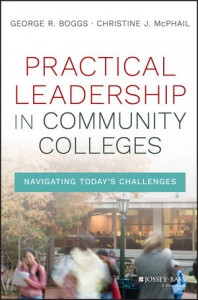The Practical Side to College Leadership
In September 2012, I chose to begin to contribute to the national conversation about higher education by tackling the concept of leadership in one of my first blogs for the Huffington Post.
In that article, I suggested, “the job has evolved, but the national imperative for presidents to lead as well as govern remains constant.” As leaders of institutions who incubate ideas, college and university presidents are ideally positioned to make a significant contribution.
Obstacles to Presidential Leadership
I chronicled a number of obstacles to experienced presidential leadership, asserting that:
- the training for how to be a president was spotty, episodic, and inconsistent;
- there is no carefully cultivated farm team from which to pull promising future leaders into the major leagues;
- there is little evidence of trustee-initiated succession planning; and
- shared governance values process and consensus over outcomes making it more difficult for “change agent” presidents to succeed.
Crisis in Shared Governance
While the reception the post received persuaded me to continue to publish and speak out on issues of higher ed leadership and governance, there was something missing from my argument. The recent dust-ups among college presidents, boards of trustees, and faculty reinforce the continuing crisis in shared governance.
The cold fact is that there is no evidence to suggest that presidents seeking to lead have any incentive to do more than preside.
It’s dangerous to put your tenure on the line and imperative that you know when to fall on your sword. What I missed in that first blog, however, was that there is a practical side to college leadership.
Shared Governance Suffers from Lack of Education
The biggest failure in shared governance is the lack of broad-based education about the issues facing those who govern America’s colleges and universities. Trustees are the most poorly educated. There is a corresponding need to keep faculty fully informed, especially on issues that affect higher education beyond the college gates.
All parties should be watching the platform positions taken by the two presidential candidates, for example, to determine how the potential implementation of these positions will affect their institution.
But there is a practical dimension to leadership. What you know, how much you know, and where and how you educate yourself has a direct relationship to the quality of shared governance on a college campus.
Education begins with the presidents, given their role as chief spokespersons and chief executive officers. A president must be an informed generalist on almost any subject that affects higher education. It’s hard to be transparent in a university community when you don’t know much about the subjects that most affect it.
New Book is Must-Read for Senior Leadership in Higher Ed
 A new book by George Boggs and Christine Johnson McPhail, Practical Leadership in Community Colleges: Navigating Today’s Challenges, is a must-read for senior leadership at every level – including faculty, senior staff, trustees, and presidents.
A new book by George Boggs and Christine Johnson McPhail, Practical Leadership in Community Colleges: Navigating Today’s Challenges, is a must-read for senior leadership at every level – including faculty, senior staff, trustees, and presidents.
The authors, both seasoned higher education leaders, use field experiences, reports, news coverage, and interviews with leaders and policy makers to review some of the challenges facing college leadership and offer advice on how best to navigate and succeed against the crosscurrents that leadership faces. They offer case studies to show in practical terms how the job gets done.
Where the Theoretical Meets the Practical
Drs. Boggs and McPhail have performed an invaluable service because they offer a readable primer that is also a continuing resource, especially for new leadership. Its value extends across American higher education, although the concentration is on America’s community colleges. Their book is where the theoretical meets the practical.
In a recent interview with George Boggs, I asked why practicality would resonate with leaders whose day job is to be “big picture” oriented. Boggs replied that higher education leadership emerges unprepared from a variety of backgrounds. He argued persuasively that the range of topics, venues, and constituencies presumed a deeper understanding among new presidents than exists today.
Dr. Boggs believes that the most important contribution that the book can make is to encourage leaders to “think about issues before they have to deal with them.”
Greatest Challenge is Helping Students Succeed
You come away from a book like Practical Leadership asking about the policy behind the advice. Boggs suggested that he and Dr. McPhail view helping students succeed as the greatest challenge facing American higher education. They remain encouraged that major foundations and national policy makers are tackling pieces of the foundation upon which student success is built.
Perhaps that’s what’s best about this new primer. It’s optimistic and hopeful – a kind of “roll up your sleeves and get the job done” approach to leadership. In that blog four years ago, I suggested that presidents must have the courage to lead. Boggs and McPhail now demonstrate that it is also important to know how and why.

